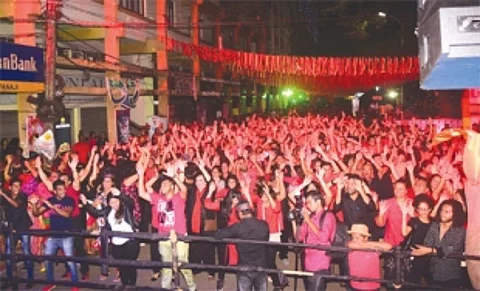

Growing up in Goa for the generation of today involved plenty of
excitement surrounding Carnival. Water balloon fights were a norm, with
territories and makeshift fortresses being claimed as vantage points; eggs were
pelted at innocent bystanders, in addition to the balloons, and colour would
also be plastered on people known and unknown, akin to Holi celebrations.
People would coordinate with friends and family, and spend hours debating what
‘the best spot’ was, to watch the floats and entire Carnival Parade pass by.
These were, of course, attended with water guns in hand, as a means of
‘protection’. The generation prior will talk about their traditions such as cocotes,
little pouches of loosely-packed dry clay and flour that would similarly be
flung at people passing by, and the serenades that would happen in the street.
However, this isn’t a process of reminiscence; this is a look at how far the
Goan carnival traditions have, well, fallen.
We now live in a time when it’s easy enough to dress up for Halloween,
which has no ties to Goa, and whose observers in the state probably know not
what ‘All Hallows Eve’ is about. However, suggest being a part of the Carnival
fancy dress and everyone suddenly discovers an aversion to dressing up in
costume for fun. We live in a time when EDM reverberating from the top of a
truck plastered with flex signage featuring brands of liquor disguised as
‘water’ or ‘music’ have overrun the number of traditional floats participating
in the parade.
However, there are some things about Carnival that seemingly remain
timeless. The family and descendants of the late Roberto Alvares, bedecked in
their Carnival best, for instance, or the revival of the alvorada tradition
and, of course, the Red and Black Dance, organised along Dr Domingos Roque De
Souza Road, in Panjim.
The Red and Black Dance is a decades-old tradition dating back to the
1970s and has been accorded the honour of bringing the carnival festivities to
a close, year after year, owing to its now legendary status. The dress code for
the event is red and black and one can’t help but wonder what an overhead
picture of the event may look like, with its festive hues. This is currently
Goa’s only dance in the streets and is hence considered a must-not-miss event.
The etymology of the name of the dance is in fact credited by most to Roberto
Alvares, who chanced upon the name in Portuguese, in a Brazilian magazine,
before extending it its Goan counterpart.
The dance has been organised, year after year, by one of the city’s
social clubs (and institutions), Clube Nacional. The club’s President, Tony
Dias, is an institution himself, and has stated the club’s discipline, when it
comes to organising their traditional activities, is second to none. “From
our New Year’s Ball to the organisation of Saudades,
which is a Portuguese theme night, to Goemchim
Laram, which is our Konkani theme night, we have been a club that is
proactive in keeping alive our heritage, for posterity. Organising the Red and
Black Dance fits in with that philosophy,” says Tony.
And while things may gradually change over time, some things will always
stay the same. Vasco Alvares, Roberto’s son and an active member of the
Carnival celebrations, points out his observations through the years, saying,
“The venue may have changed from the club’s premises to the streets, but the
bulk of it remains the same. However, it would be good if people would bring
back the tradition of dressing up and coming in costume. At one point,
literally nobody did it. Along with a few friends, my wife and I restarted the
tradition, and it seems to have caught on. We need to do our bit to keep these
traditions alive.”
And while there may be other events that come up around Carnival, let us
not forget that you can’t buy history or heritage. Nightclubs may organise
parties, but nightclubs will still be standing the next day after the Carnival
celebrations are over, and could even be visited then. This event can’t be.
These little initiatives undertaken by some traditional, organisational
stalwarts like Tony Dias, Messias Tavares and Francisco Martins, to name a few,
are part of Goa’s soul; if we the people don’t drive them to excel, then who
will?